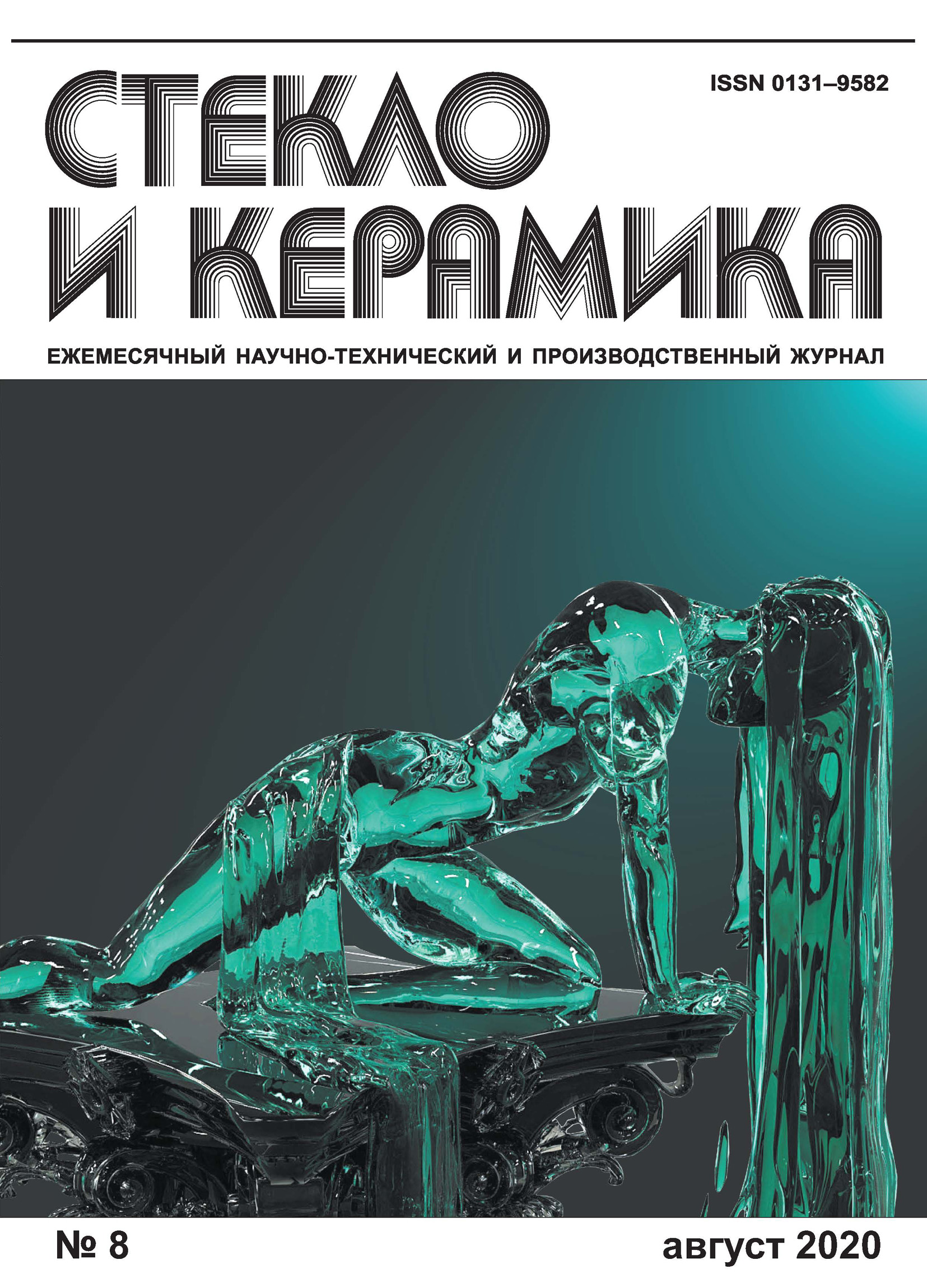Господдержка предприятий-производителей строительных материалов

The 8th issue of the monthly scientific and technical journal "Glass and Ceramics" for 2020 has been released.
Content of the August issue:
- Formation of current-carrying buses on glass with an electrically conductive coating by the gas-dynamic method
Using the example of glass with the composition 15Na2O · 10CaO · 75SiO2, the possibility of forming current-carrying buses on an electrically conductive coating by the method of "cold" gas-dynamic spraying is shown.
- Information analysis of the utilization rate of sheet glass in production
An informational analysis of the yield of suitable glass in the production process was carried out. The influence of waste from individual production stages on the utilization rate of glass is shown. A model was compiled using fuzzy systems to describe the dependence of the utilization rate of glass on the chemical composition of the charge, glass and technological modes of forming and annealing a glass ribbon. The proposed method for analyzing the utilization rate of glass can be used in quality management systems in the production of flat glass by the float method.
- Glasses that attenuate electromagnetic radiation
A radio-absorbing glass that is transparent in the visible region of the spectrum has been developed. The radioprotective effect was obtained by implanting accelerated ions of transition elements into the surface layer of glass, not exceeding 100 nm, which form nanoparticles in the glass that absorb electromagnetic radiation. Measurements of the absorption of electromagnetic radiation (EMR) by implanted model and sheet glasses showed that the attenuation of the EMR power is in the range of 6.2 - 30.2 dB for phosphate glass and 7.8 - 34.1 dB for silicate glasses. The greatest radioprotective effect is observed on glasses implanted with nickel Ni + and cobalt Co +. EMP absorption can be increased up to 37.5 dB by heat treatment.
- Glass silica based on wastes of enrichment of ferruginous quartzites of the Kursk magnetic anomaly and glass household waste
A technology has been developed for the production of glass silica based on the wastes of enrichment of ferruginous quartzites of the Kursk Magnetic Anomaly (KMA) of the Lebedinsky GOK and fractionated broken glass of colored container glasses. The use of wastes of enrichment of ferruginous quartzites of KMA allowed to reduce the sintering temperature and improve the quality of glass silica. The obtained glass-silica has high operational and aesthetic-consumer properties.

Source:http://www.glassnews.info/